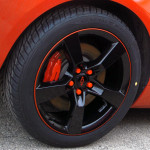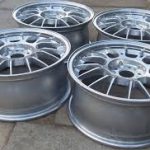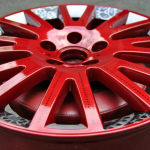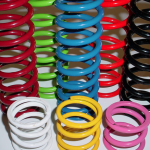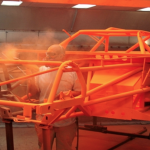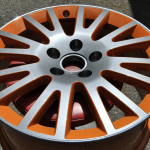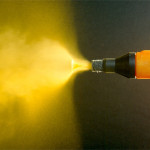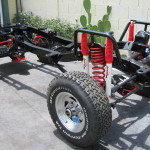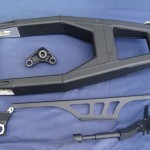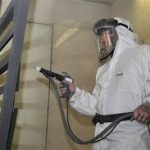Powder Coating – FR Payne – Adelaide South Australia
Powder coating is a type of coating that is applied as a free-flowing, dry powder. The main difference between a conventional liquid paint and a powder coating is that the powder coating does not require a solvent to keep the binder and filler parts in a liquid suspension fo
Powder coated products are more resistant to chipping, scratching, UV rays, and corrosive elements. This process uses a dry powder of polymer resins, pigments, leveling agents, and other additives that is ground into a uniform powder.
The powder may be a thermoplastic or a thermoset polymer. It is usually used to create a hard finish that is tougher than conventional paint. Powder coating is mainly used for coating of metals, such as household appliances, aluminum extrusions, drum hardware, automobile and bicycle parts.
The coating is typically applied by a spray gun with an electrostatic charge, electrostatic spray deposition (ESD) is used to apply the powder coating to the metal product and is then cured under heat reacts and allow it to flow and form a “skin”. on the material / part.
The powder coat bonding is much thicker than standard wet paint, which is generally no more the .5 to 1 mil in thickness (a mil is one one-thousandths of an inch). Powder coat finishes range from 2 mil to 10 mil in thickness
Safety and Sustainability: Because the powder coating process does not require a liquid carrier (solvent) like liquid coatings this system emits near zero volatile organic compounds (VOCs).
This means powder coating is environmentally friendly since no VOCs are released into the air.
Because no carrier fluid evaporates away, the coating process emits few volatile organic compounds (VOC).
Most powder coat materials are considered non-hazardous material and landfill safe. Powder coating meets all Environmental Protection Agency (EPA) requirements for air and water pollution control.
